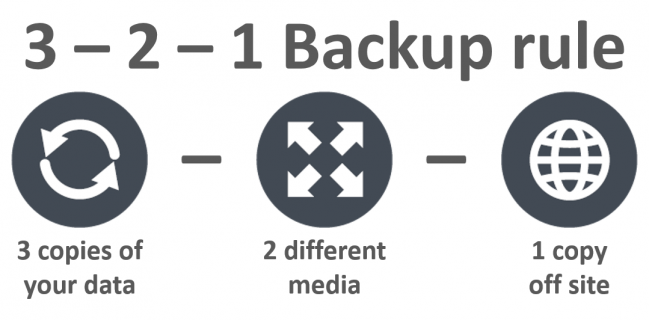3-2-1 Backup Rule – An Efficient Data Protection Strategy
Backups ensure that your critical data will survive any of the likely hazards. For a one-computer user, the backup strategy can be as simple as copying all important files to another device or, ideally, several devices and keeping them in a safe place. However, for multiple computer systems, things can be much more complicated, especially when it comes to virtual environments containing thousands of virtual machines. In these cases, a comprehensive data protection plan should include the 3-2-1 backup rule.
The 3-2-1 backup rule is an easy-to-remember acronym for a common approach to keeping your data safe in almost any failure scenario. The rule is: keep at least three (3) copies of your data, and store two (2) backup copies on different storage media, with one (1) of them located of-site.
The more backup copies you have, the less chance you have to lose all of them at once. Thus, the 3-2-1 backup rule states that you need at least three copies of your data, meaning the primary data and two backups of this data. Any storage device will fail sooner or later. Hard drives fail over time, whether because of a defect or simply wearing out. Two devices of the same type have a much greater risk of failing around the same time than two devices of different types or two different storage media.
Thus, the 3-2-1 backup rule says that if you keep your primary data on an internal hard drive, store your backup copies a different way. Multiple copies stipulated by the 3-2-1 backup rule protect you from losing your primary data together with its only backup copy, whereas storing copies of data in multiple locations ensures that there is no single point of failure and that your data is safe.










